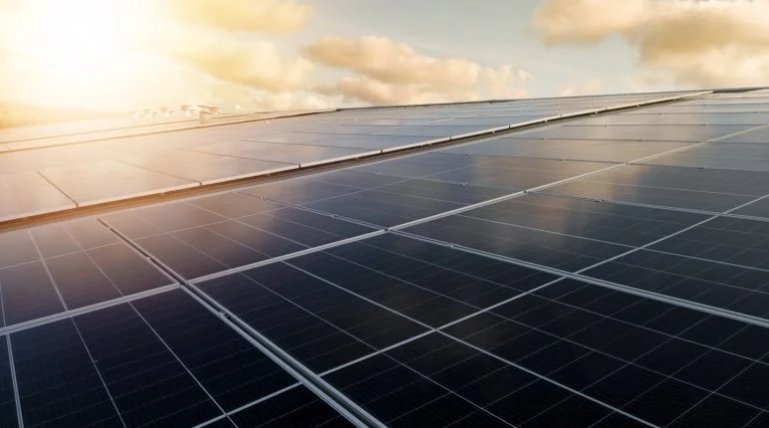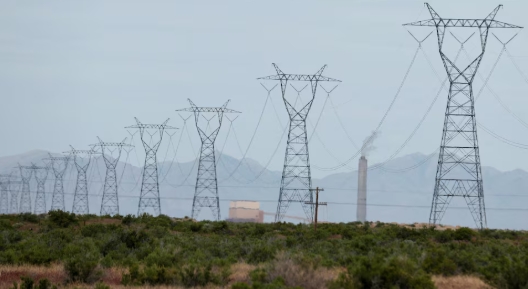Many climate scientists warn that if we don’t change course the planet will warm by as much as 6 degrees Celsius, according to an article prepared by NASA’s Jet Propulsion Laboratory. If that happens, the World Bank Group predicts there will be more than 100 million climate refugees by 2050.

Capitalism and Climate
Firmly rooted in capitalism, the global oil and gas industry has the technical, commercial, cultural and geopolitical prowess to help address climate change. The industry is filled with engineers, scientists, accountants, lawyers, bankers, commodity traders, human resource professionals and consultants, who work on every continent, speak every language, have experience dealing with every government and who do amazing things safely and profitably.
The energy industry sees a revolution coming. That’s one reason ExxonMobil and Chevron recently joined the Oil and Gas Climate Initiative (OGCI), a consortium of major global companies that have committed $1 billion to invest in innovative technologies to respond to climate change, per an OGCI report from 2018. BP rebranded itself Beyond Petroleum. Shell recently announced that it intends to double its investment in renewables, including investments in solar power and electric automobile technology. According to Chevron’s 2018 Annual Report, the company has been investing in renewables including wind, geothermal and biodiesel.
Taken together, the world’s top 24 oil companies invested $3.4 billion in low carbon energy technology in 2018, according to a Reuters article from November 2018. They see the world changing, and they know that they must be ready to change with it.
While the top oil companies are acknowledging this inevitable change, their total investment in renewable energy is less than 2% of their collective $250+ billion investment capacity, according to a Reuters article from November 2018. Big oil is doing little more than acquainting itself with a nascent industry; they have yet to make a decisive move into renewable energy. But they might, when there are just as many opportunities in renewables as in oil and gas.
For now, major oil companies believe the market will still reward profitable investments in oil and gas. But executives will tell you that a global energy revolution is likely coming because the economics of renewables are changing rapidly.
Cost of Renewable Energy Systems
Wind and solar are, and are likely to remain, the dominant renewable energy sources. They represent 80% of new investment in the renewables sector and the cost of each has fallen dramatically, according to Bloomberg New Energy Finance.
The global weighted-average cost of onshore wind projects fell from $85/MWh in 2010 to $56/MWh in 2018, according to an IRENA report.The decline in cost is due to advances in turbine blade design, allowing for much larger and more efficient wind turbines, as well as gains resulting from manufacturing scale.
Similarly, the weighted-average cost of utility-scale solar has fallen from $371/MWh in 2010 to $85/MWh in 2018, according to the IRENA reportand it is expected to fall further. Industry insiders refer to Swanson’s law (named after the founder of SunPower, a solar panel manufacturer) that says the cost of solar panels declines by 20% for every doubling of cumulative shipped volume. This is partly due to improved conversion—in the early days of solar technology, a photovoltaic cell would convert 6% of solar energy to electricity; today, the conversion rate is 20% or more, according to an article in energysage.com (with higher conversation rates on the way). And like wind turbines, the cost of solar panels is impacted by manufacturing scale.
At these costs, the economics of solar and wind as generation sources are catching up (or have caught up) with other sources of power generation. The cost to generate power using traditional fossil fuel resources, for example, is $49/MWh – $174/MWh depending on country and location, according to IRENA.
Developments in Storage Technology
Often referred to as the holy grail of the renewable energy industry, the cost and functionality of electricity storage has improved dramatically. The cost of lithium-ion batteries has fallen by 85% in a decade, according to a recent Bloomberg article, “Battery Reality: There’s Nothing Better Than Lithium-Ion Coming Soon.” Florida Power and Light, for example, recently announced that it is building a 900 megawatt battery storage unit capable of powering 329,000 homes for two hours. Consulting firm Wood MacKenzie expects utility-scale storage capacity to increase more than 13-fold over the next six years, according to an article from April 2019. That same article states that some industry watchers put the total investment in new storage technologies at more than $71 billion by the end of 2024. An article featured on Green Tech Media in May 2018 estimates that new battery storage will replace 32% of new natural gas peaker capacity over the next 10 years. And of course, battery technology is fundamental to electric vehicles. There are already one million battery-powered cars on the road today, and there is new battery technology on the horizon that will dramatically improve the range, fire hazard and charging rate of lithium-ion batteries, according to the article “All Charged Up” in Texas Monthly. Soon, electric motors could be better than internal combustion engines, and when that day comes, gasoline-powered cars may quickly become obsolete.
Developments in Grid Technology
Some of the most exciting work involving renewables is in smart grid technology. Conventional wisdom once held that grid reliability became difficult to manage when renewables reached 25% of the generation portfolio, according to ABB’s energy experts. Today, thanks to improved storage and advances in grid management software, grids can operate reliably with much more renewable generation in the mix. For example, the Southwest Power Pool, which covers 14 states in the heartland of America, operates reliably with 50-60% of its generation from wind, according to an article published on the blog, Into the Wind.
Engineers are on the cusp of marrying artificial intelligence with consumer-operated electric devices (e.g., electric cars). This would create the ability to send and receive power in small increments to allow grid operators to balance loads quickly and in ways that bulk generating systems simply cannot. When the grid, battery-powered devices and the internet start talking to each other, the possibilities for efficient storage and power management may be endless.
A Consumer Led Revolution
There’s no question that government intervention helped launched the renewable energy industry and allowed it to grow. But it is not entirely government intervention that sustains it today. In fact, government subsidies are declining (particularly in the U.S.), while the renewable industry continues to grow. There is something much more fundamental, much more powerful, much more permanent, driving the expansion of renewable energy.
Consumers are placing demands on companies to include renewables as part of their overall energy mix, and companies are responding in profound ways. That includes buying power from renewable energy sources. The KPMG article, “New drivers of the renewable energy transition,” suggests that some 60% of Fortune 100 companies have set clean energy targets, as well as half of the Fortune 500. Cities, universities and government entities of all kinds are doing the same.
Rapid expansion of the renewable energy industry—and the dramatic improvement in cost and technological sophistication that result—is largely about investors trying to keep up with consumer demand.
Big Oil’s Move into Renewables
Investors in renewable power are pouring an estimated $300 billion per year into the sector worldwide, according to a Green Tech Media article from May 2018. Forecasters believe that at the current pace of investment, renewable energy will comprise 40% of the world’s total energy supply by 2040, according to Rick Leblanc’s June 2019 article, compared to 24% today, according to the International Energy Agency. As impressive as these investment levels are, it’s not enough to reduce total carbon production that climate scientists advise is needed to hold warming to 2 degrees Celsius.
According to the International Energy Agency, the oil industry generates more than $715 billion of investible cash every year. A decisive move by big oil into the renewable energy space will go a long way toward accelerating the pace of our global energy revolution. With costs coming down and technology evolving rapidly, some oil companies may very well make their move.
There is no realistic scenario that has all $715 billionof oil industry investment capacity going toward renewables. Natural gas will be a very important part of our overall energy mix because it is clean-burning. Global liquified natural gas capacity is expected to increase from 40 billion cubic feet per day today to 75 billion cubic feet by 2040, according to Scott Madden’s Energy Industry Update. As for oil, even after electric motors replace internal combustion, liquid hydrocarbons will be needed for lubricants and other specialty applications such as jet fuel. There will always be an oil and gas industry.
But market forces will make investment in renewable energy compelling, and some of the oil majors will marry their long-established, global talent with new capabilities they are developing now, as they acquaint themselves with the renewable energy industry.
With a revolution coming, many good men and women who made their living in the oil business and who are proud of what they’ve accomplished, will nevertheless hope that big oil moves into renewables in a decisive way. And they are ready to be part of it.







